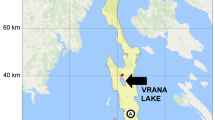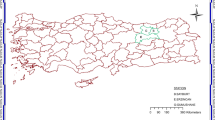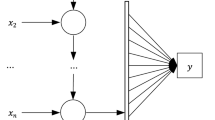Abstract
Dissolved oxygen (DO) concentration in water is one of the key parameters for assessing river water quality. Artificial intelligence (AI) methods have previously proved to be accurate tools for DO concentration prediction. This study presents the implementation of a deep learning approach applied to a recurrent neural network (RNN) algorithm. The proposed deep recurrent neural network (DRNN) model is compared with support vector machine (SVM) and artificial neural network (ANN) models, formerly shown to be robust AI algorithms. The Fanno Creek in Oregon (USA) is selected as a case study and daily values of water temperature, specific conductance, streamflow discharge, pH, and DO concentration are used as input variables to predict DO concentration for three different lead times (“t + 1,” “t + 3,” and “t + 7”). Based on Pearson’s correlation coefficient, several input variable combinations are formed and used for prediction. The model prediction performance is evaluated using various indices such as correlation coefficient, Nash–Sutcliffe efficiency, root mean square error, and mean absolute error. The results identify the DRNN model (\({{CC}_{Testing}= 0.97, NSE}_{Testing}=0.948, {RMSE}_{Testing}=0.43\mathrm{ and }{MAE}_{Testing}=0.25\)) as the most accurate among the three models considered, highlighting the potential of deep learning approaches for water quality parameter prediction.










Similar content being viewed by others
Availability of data and materials
Please contact the corresponding author for data requests.
Code availability
Please contact the corresponding author for code requests.
References
Abba, S.I., Abdulkadir, R.A., Sammen, S.S., et al. (2021). Comparative implementation between neuro-emotional genetic algorithm and novel ensemble computing techniques for modelling dissolved oxygen concentration. Hydrological Sciences Journal.
Abba, S. I., Linh, N. T. T., Abdullahi, J., et al. (2020). Hybrid machine learning ensemble techniques for modeling dissolved oxygen concentration. IEEE Access, 8, 157218–157237.
Ahmed, A. A. M. (2017). Prediction of dissolved oxygen in Surma River by biochemical oxygen demand and chemical oxygen demand using the artificial neural networks (ANNs). Journal of King Saud University-Science, 29, 151–158.
Anderson, C.W., & Rounds, S. (2003). Phosphorus and E. coli and their relation to selected constituents during storm runoff conditions in Fanno Creek, Oregon, 1998–99. US Department of the Interior, US Geological Survey.
Antanasijević, D., Pocajt, V., Povrenović, D., et al. (2013). Modelling of dissolved oxygen content using artificial neural networks: Danube River, North Serbia, case study. Environmental Science and Pollution Research, 20, 9006–9013.
Armanuos, A., Ahmed, K., Shiru, M. S., & Jamei, M. (2021). Impact of increasing pumping discharge on groundwater level in the Nile Delta Aquifer Egypt. Knowledge-Based Engineering and Sciences, 2, 13–23.
Asadollah, S.B.H.S., Sharafati, A., Motta, D., & Yaseen, Z.M. (2021). River water quality index prediction and uncertainty analysis: A comparative study of machine learning models. Journal of Environmental Chemical Engineering. 9:104599.
Ay, M., & Kisi, O. (2012). Modeling of dissolved oxygen concentration using different neural network techniques in Foundation Creek, El Paso County, Colorado. Journal of Environmental Engineering, 138, 654–662.
Basak, D., Pal, S., Ch, D., & Patranabis, R. (2007). Support vector regression. In: Neural information processing letters and reviews. pp 203–224.
Bengio, Y. (2009). Learning deep architectures for AI. Found Trends Mach Learn, 2, 1–27. https://doi.org/10.1561/2200000006
Bengio, Y., Simard, P., & Frasconi, P. (1994). Learning long-term dependencies with gradient descent is difficult. IEEE Transactions on Neural Networks, 5, 157–166.
Boyd, C. E., Torrans, E. L., & Tucker, C. S. (2018). Dissolved oxygen and aeration in ictalurid catfish aquaculture. Journal of the World Aquaculture Society, 49, 7–70.
Chen, K., Chen, H., Zhou, C., et al. (2020). Comparative analysis of surface water quality prediction performance and identification of key water parameters using different machine learning models based on big data. Water Research, 171, 115454.
Cortes, C., & Vapnik, V. (1995). Support-vector networks. Machine Learning, 20, 273–297.
Cox, B. A. (2003). A review of dissolved oxygen modelling techniques for lowland rivers. Science of the Total Environment, 314, 303–334.
Dehghani, R., Torabi Poudeh, H., & Izadi, Z. (2021). Dissolved oxygen concentration predictions for running waters with using hybrid machine learning techniques. Modeling Earth Systems and Environment, 1–15.
Dibike, Y. B., Velickov, S., Solomatine, D., & Abbott, M. B. (2001). Model induction with support vector machines: Introduction and applications. Journal of Computing in Civil Engineering, 15, 208–216. https://doi.org/10.1061/(ASCE)0887-3801(2001)15:3(208)
Elzwayie, A., El-Shafie, A., Yaseen, Z. M., et al. (2017). RBFNN-based model for heavy metal prediction for different climatic and pollution conditions. Neural Computing and Applications, 28, 1991–2003.
Eskandari, A., Nouri, R., Meraji, H., & Kiaghaderi, A. (2012). Development of appropriate model based on artificial neural network and support vector machine for forecasting 5-days biochemical oxygen demand (BOD5). Environmental Studies, 38, 71–82.
Goldman, J. H., Rounds, S. A., Keith, M. K., & Sobieszczyk, S. (2014). Investigating organic matter in Fanno Creek, Oregon, Part 3 of 3: Identifying and quantifying sources of organic matter to an urban stream. Journal of Hydrology, 519, 3028–3041.
Graves, A., Mohamed, A., & Hinton, G. (2013). Speech recognition with deep recurrent neural networks Alex Graves, Abdel-rahman Mohamed and Geoffrey Hinton Department of Computer Science, University of Toronto. IEEE Int Conf Acoust Speech Signal Process, 2013, 6645–6649.
Guo, P., Liu, H., Liu, S., & Xu, L. (2019). Numeric prediction of dissolved oxygen status through two-stage training for classification-driven regression. In: 2019 International Conference on Machine Learning and Cybernetics (ICMLC). IEEE, 1–6.
He, J., Chu, A., Ryan, M. C., et al. (2011). Abiotic influences on dissolved oxygen in a riverine environment. Ecological Engineering, 37, 1804–1814.
Heddam, S. (2014). Modeling hourly dissolved oxygen concentration (DO) using two different adaptive neuro-fuzzy inference systems (ANFIS): A comparative study. Environmental Monitoring and Assessment, 186, 597–619.
Heddam, S. (2021). Intelligent data analytics approaches for predicting dissolved oxygen concentration in river: Extremely randomized tree versus random forest, MLPNN and MLR. In: Intelligent data analytics for decision-support systems in hazard mitigation. Springer, 89–107.
Heddam, S., & Kisi, O. (2017). Extreme learning machines: A new approach for modeling dissolved oxygen (DO) concentration with and without water quality variables as predictors. Environmental Science and Pollution Research, 24, 16702–16724.
Heddam, S., & Kisi, O. (2018). Modelling daily dissolved oxygen concentration using least square support vector machine, multivariate adaptive regression splines and M5 model tree. Journal of Hydrology, 559, 499–509.
Huan, J., Cao, W., & Qin, Y. (2018). Prediction of dissolved oxygen in aquaculture based on EEMD and LSSVM optimized by the Bayesian evidence framework. Computers and Electronics in Agriculture, 150, 257–265. https://doi.org/10.1016/j.compag.2018.04.022
Huan, J., & Liu, X. (2016). Dissolved oxygen prediction in water based on K-means clustering and ELM neural network for aquaculture. Transactions of the Chinese Society of Agricultural Engineering, 32, 174–181.
Khaleefa, O., & Kamel, A. H. (2021). On the evaluation of water quality index: Case study of Euphrates river, Iraq. Knowledge-Based Engineering and Sciences, 2, 35–43.
Khan, U.T., & Valeo, C. (2017). Comparing a Bayesian and fuzzy number approach to uncertainty quantification in short-term dissolved oxygen prediction. Journal of Environmental Informatics, 30.
Khozani, Z. S., Khosravi, K., Pham, B. T., et al. (2019). Determination of compound channel apparent shear stress: Application of novel data mining models. Journal of Hydroinformatics, 21, 798–811.
Kia, M. (2018). Soft computing using MATLAB, 5th edn. Kian Rayaneh Sabz Publication, tehran.
Kisi, O., Alizamir, M., & Gorgij, A.D. (2020). Dissolved oxygen prediction using a new ensemble method. Environ Sci Pollut Res, 1–15.
Kisi, O., & Cimen, M. (2011). A wavelet-support vector machine conjunction model for monthly streamflow forecasting. Journal of Hydrology, 399, 132–140.
Kratzert, F., Klotz, D., Brenner, C., et al. (2018). Rainfall–runoff modelling using long short-term memory (LSTM) networks. Hydrology and Earth System Sciences, 22, 6005–6022.
Li, X., Sha, J., & Wang, Z. (2017). A comparative study of multiple linear regression, artificial neural network and support vector machine for the prediction of dissolved oxygen. Hydrology Research, 48, 1214–1225.
Liu, F., Xu, F., Yang, S., et al. (2017). Patch based semi-supervsied linear regression for single sample face recognition. In: 2017 IEEE Third International Conference on Multimedia Big Data (BigMM). IEEE, 62–65.
Liu, G.Q. (2011). Comparison of regression and ARIMA models with neural network models to forecast the daily stream flow.
Liu, S., Yan, M., Tai, H., et al. (2011). Prediction of dissolved oxygen content in aquaculture of Hyriopsis cumingii using Elman neural network. In: International Conference on Computer and Computing Technologies in Agriculture. Springer, 508–518.
Lu, H., & Ma, X. (2020). Hybrid decision tree-based machine learning models for short-term water quality prediction. Chemosphere, 249,126169.
Misra, D., Oommen, T., Agarwal, A., et al. (2009). Application and analysis of support vector machine based simulation for runoff and sediment yield. Biosystems Engineering, 103, 527–535. https://doi.org/10.1016/j.biosystemseng.2009.04.017
Naganna, S. R., Beyaztas, B. H., Bokde, N., & Armanuos, A. M. (2020). On the evaluation of the gradient tree boosting model for groundwater level forecasting. Knowledge-Based Engineering and Sciences, 1, 48–57.
Najah, A., El-Shafie, A., Karim, O. A., & El-Shafie, A. H. (2014). Performance of ANFIS versus MLP-NN dissolved oxygen prediction models in water quality monitoring. Environmental Science and Pollution Research, 21, 1658–1670.
Nestler, A., & Heine, L. (2020). Oregon Department of Environmental Quality.
Olyaie, E., Abyaneh, H. Z., & Mehr, A. D. (2017). A comparative analysis among computational intelligence techniques for dissolved oxygen prediction in Delaware River. Geoscience Frontiers, 8, 517–527.
Poole, R.L. (1976). Dissolved oxygen probe.
Post, C., Cope, M. P., Mikhailova, E. A., et al. (2018). Monitoring spatial and temporal variation of dissolved oxygen, turbidity and water temperature in the Savannah River using a sensor network. AGUFM, 2018, H51E – H56.
Reeder, W. J., Quick, A. M., Farrell, T. B., et al. (2018). Spatial and temporal dynamics of dissolved oxygen concentrations and bioactivity in the hyporheic zone. Water Resources Research, 54, 2112–2128.
Schmidhuber, J. (1993). Habilitation thesis: System modeling and optimization.
Sharafati. A., Haji Seyed Asadollah, SB., Motta, D., & Yaseen, Z.M. (2020). Application of newly developed ensemble machine learning models for daily suspended sediment load prediction and related uncertainty analysis. Hydrological Sciences Journal.
Tomić, A. Š, Antanasijević, D., Ristić, M., et al. (2018). A linear and non-linear polynomial neural network modeling of dissolved oxygen content in surface water: Inter-and extrapolation performance with inputs’ significance analysis. Science of the Total Environment, 610, 1038–1046.
Tur, R., & Yontem, S. (2021). A comparison of soft computing methods for the prediction of wave height parameters. Knowledge-Based Eng Sci, 2, 31–46.
Vapnik, V., & Chervonenkis, A. (1991). The necessary and sufficient conditions for consistency in the empirical risk minimization method. Pattern Recognition and Image Analysis, 1, 283–305.
Wang, J., qing, Zhang X dong, Nie M, et al. (2008). Exotic Spartina alterniflora provides compatible habitats for native estuarine crab Sesarma dehaani in the Yangtze River estuary. Ecological Engineering, 34, 57–64. https://doi.org/10.1016/j.ecoleng.2008.05.015
Xiao, Z., Peng, L., Chen, Y., et al. (2017). The dissolved oxygen prediction method based on neural network. Complexity, 2017.
Zhu, S., & Heddam, S. (2019). Prediction of dissolved oxygen in urban rivers at the Three Gorges Reservoir, China: extreme learning machines (ELM) versus artificial neural network (ANN). Water Quality Research Journal.
Author information
Authors and Affiliations
Contributions
Salar Valizadeh Moghadam carried out the investigation and participated in drafting the manuscript. Ahmad Sharafati proposed the topic and participated in coordination and paper editing. Hajar Feyzi carried out modeling and participated in drafting the manuscript. Seyed Mohammad Saeid Marjaie carried out the review analysis and participated in drafting the manuscript. Seyed Babak Haji Seyed Asadollah aided in the interpretation of results and participated in drafting the manuscript. Davide Motta carried out an investigation and paper editing. All authors read and approved the final manuscript.
Corresponding author
Ethics declarations
Ethics approval
Not applicable.
Consent to participate
Not applicable.
Consent for publication
Not applicable.
Competing interests
The authors declare no competing interests.
Additional information
Publisher's Note
Springer Nature remains neutral with regard to jurisdictional claims in published maps and institutional affiliations.
Rights and permissions
About this article
Cite this article
Moghadam, S.V., Sharafati, A., Feizi, H. et al. An efficient strategy for predicting river dissolved oxygen concentration: application of deep recurrent neural network model. Environ Monit Assess 193, 798 (2021). https://doi.org/10.1007/s10661-021-09586-x
Received:
Accepted:
Published:
DOI: https://doi.org/10.1007/s10661-021-09586-x




